Millions catch a glimpse of rare astronomical event on March 14
Millions of Australians were treated to a rare astronomical sight on March 14, as scientists described the phenomenon as ‘the moon with a sunset’ – did you see Friday night's spectacular sight?
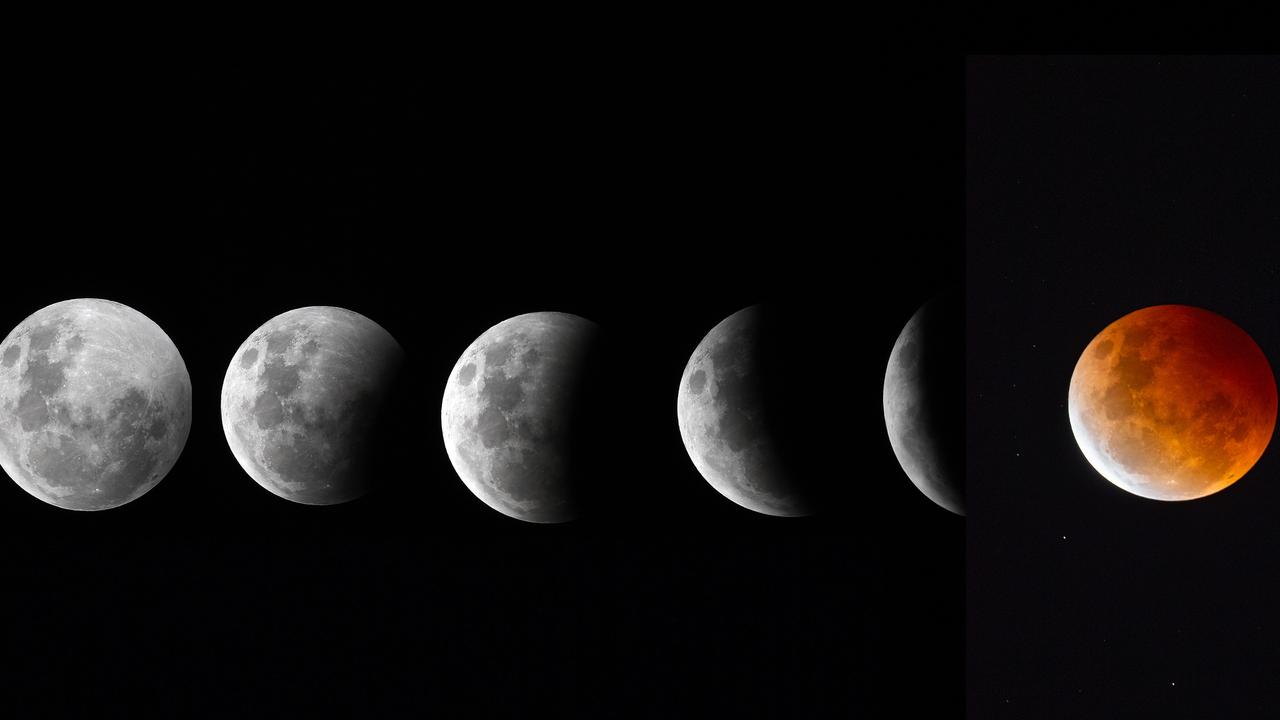
READING LEVEL: GREEN
Millions of Australians will be treated to a rare astronomical* sight this week, as a total lunar eclipse is set to arrive on Friday.
The exciting lunar event, where the moon will be flooded with a rich, orange-red light, last happened more than three years ago.

WHAT IS A BLOOD MOON?
Colloquially* referred to as a “blood moon”, the phenomenon* is a rare total lunar eclipse.
It happens when the sun, Earth and moon align at the same time – called a syzygy – meaning the moon passes underneath Earth’s shadow.
“The moon will gradually fade from one side (like a shadow is taking a bite out of it) until it goes completely dark, then turns a deep blood-red colour,” University of Melbourne associate professor of cultural astronomy* Duane Hamacher told NewsWire.
“This is the total eclipse, when the moon passes directly within the shadow of the Earth.”
The phenomenon is known as a “blood” moon because it adopts an orange-red colour once it passes through the darkest part of Earth’s shadow, the umbra*.
“From any given location, total lunar eclipses can be seen every two and a half years, while total solar eclipses can only be seen every few hundred years,” Prof Hamacher said.
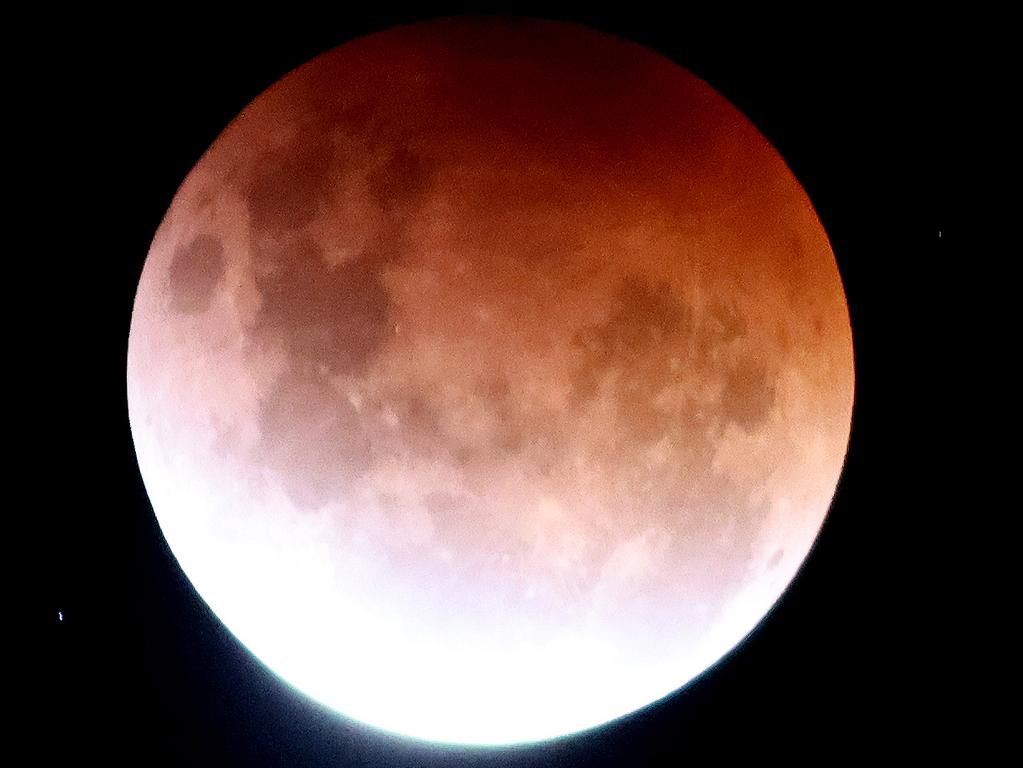
WHY DOES THE MOON TURN RED?
There’s a reason many people refer to the lunar eclipse as a “blood” moon, and that’s thanks to the orange-red colour displayed as the moon passes under Earth’s shadow.
“Particles in the Earth’s atmosphere (mostly nitrogen* and oxygen*) scatter blue wavelengths* of sunlight, a process called Rayleigh scattering*,” Prof Hamacher said. “This is why the sky is blue.”
Because red has a longer wavelength and is less affected by Earth’s atmosphere, it passes through without much scattering.
“During a total lunar eclipse, the Earth’s atmosphere acts like a magnifying glass, projecting the red light onto the moon,” he added.
University of Sydney Professor Tim Bedding told NewsWire the sight was akin to “illuminating the moon with a sunset”.
“The surface of the moon looks somewhat reddish, and that’s why it gets the name ‘blood moon’,” Prof Bedding said.
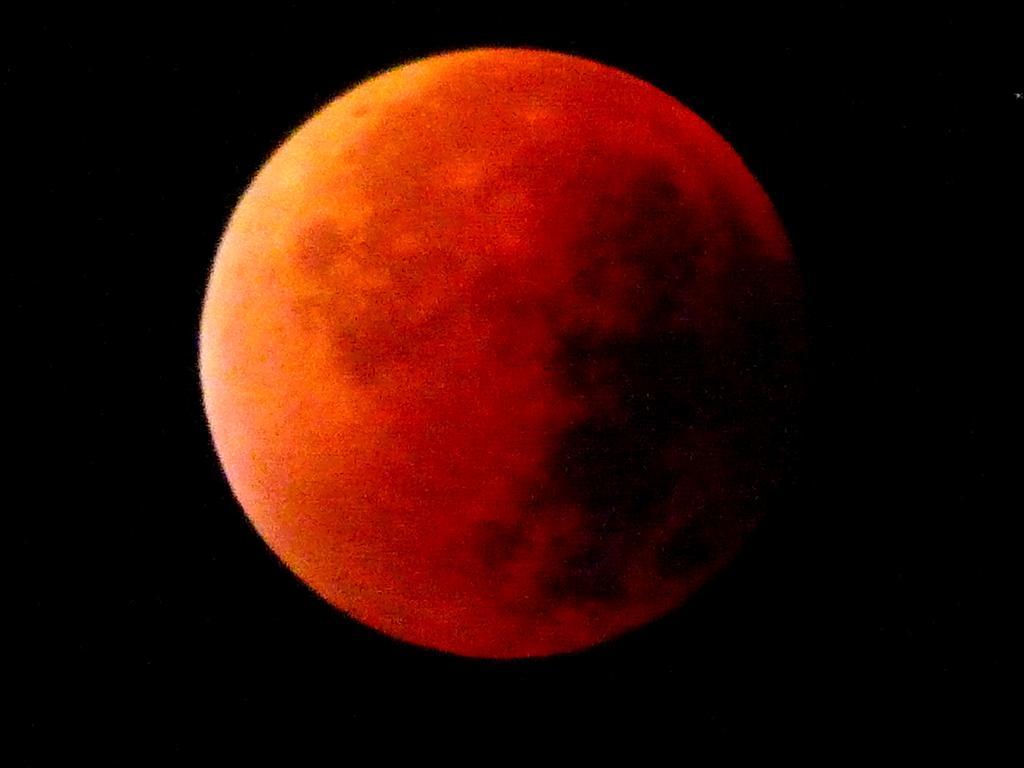
WHEN CAN WE SEE THE BLOOD MOON?
While the blood moon is a rare and incredible sight to see, only pockets of Australia will be able to experience this one in all its glory.
“This particular lunar eclipse will be visible mostly from North and South America, but those as far west or east as Africa and eastern Australia can see part of the eclipse,” Prof Hamacher said.
But we don’t miss out entirely, with residents in the some northern regions of Australia more likely to catch a glimpse on Friday.
Residents will be able to see the moon in the following cities at the following times:
Sydney: 7:13pm
Canberra: 7:22pm
Melbourne: 7:40pm
Brisbane: 6:04pm
Adelaide: 7:35pm
Darwin: 7:02pm
Hobart: 7:32pm
Unfortunately, Perth residents will not be able to witness the incredible moon this time around, as moonrise takes place at 6:37pm.
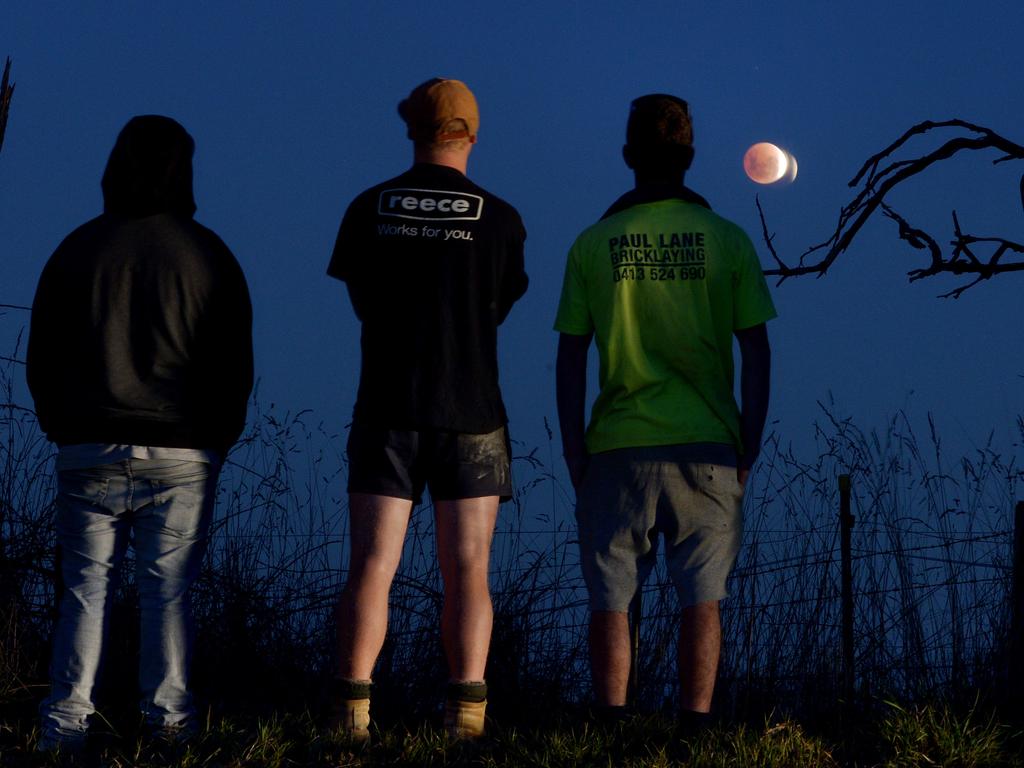
HOW TO IMPROVE YOUR CHANCES
The best place to spot the moon is somewhere dark without artificial city lights affecting the sky.
Choose a high vantage* point with a clear view, facing the eastern horizon, such as the ocean.
“The further north you (go, the better) you’ll be able to see the moon,” Prof Bedding said.
”From Sydney and … north of there, you should be able to try and get a view of the eastern horizon, so the sea would be good.”
And yes, it is safe to look at the moon during its eclipse.
“The moon would never harm your eyes,” Prof Bedding said.
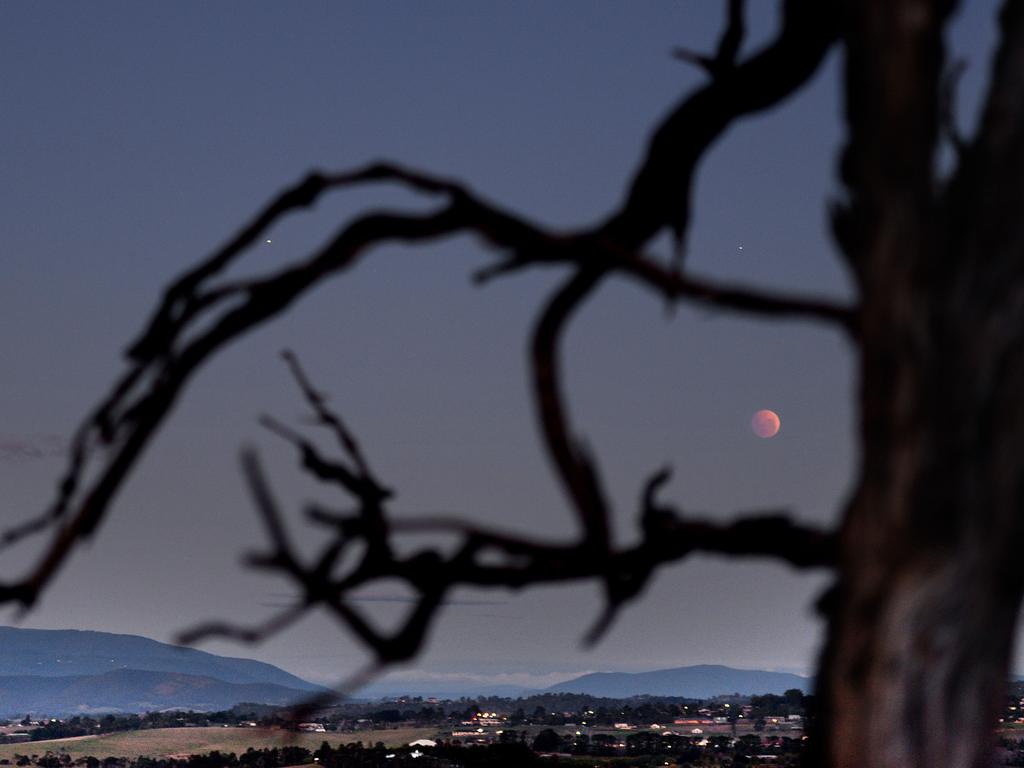
POLL
GLOSSARY
- astronomical: relating to the science of astronomy
- colloquially: informally, casually, often used in familiar speech rather than formal writing
- phenomenon: any remarkable occurrence or person
- astronomy: the scientific study of the stars, planets, and other natural objects in space
- umbra: the very darkest part of any shadow, can also refer to a phantom or ghostly apparition
- nitrogen: a colourless, chemical element that has no smell and is usually found as a gas
- oxygen: one of the main gases that make up air, it’s colourless, odourless and is needed for human, animal and plant life
- wavelength: the length of the shortest repeating part of a “sine wave” and all waves can be formed by adding up sine waves
- Rayleigh scattering: the scattering of light by the small particles present in the atmosphere
- vantage: position, viewpoint, a place that provides a good, clear view of something
EXTRA READING
Planets to align in rare ‘parade’
Webb telescope on asteroid’s tail
Katy Perry to rocket into space
QUICK QUIZ
- What is a syzygy?
- What happens when the moon passes through the darkest part of Earth’s shadow?
- What are the particles in Earth’s atmosphere mostly made of?
- When was the last blood moon visible in Australia?
- Which is the longer wavelength, red or blue?
LISTEN TO THIS STORY
CLASSROOM ACTIVITIES
1. Weird words
“Syzygy” is an unusual word. You could say it’s weird! Can you think of even weirder or more unusual words? Think of some or use your research skills to find at least 10 weird or unusual words. Then write a short story using all of your words. You must include “syzygy” in your story, too.
Time: allow at least 40 minutes to complete this activity
Curriculum Links: English
2. Extension
Write a description of a blood moon for someone who cannot see it. Your purpose is to make this person feel like they are seeing it themselves.
Time: allow at least 20 minutes to complete this activity
Curriculum Links: English, Science
VCOP ACTIVITY
Adjectives
An adjective is a describing word. They are often found describing a noun. Start by looking at the words before the nouns.
Search for all the adjectives you can find in the article.
Did you find any repeat adjectives or are they all different?
Extension:
Pick three of your favourite adjectives from the text and put them in your own sentences to show other ways to use them.
Have you used any in your writing?

